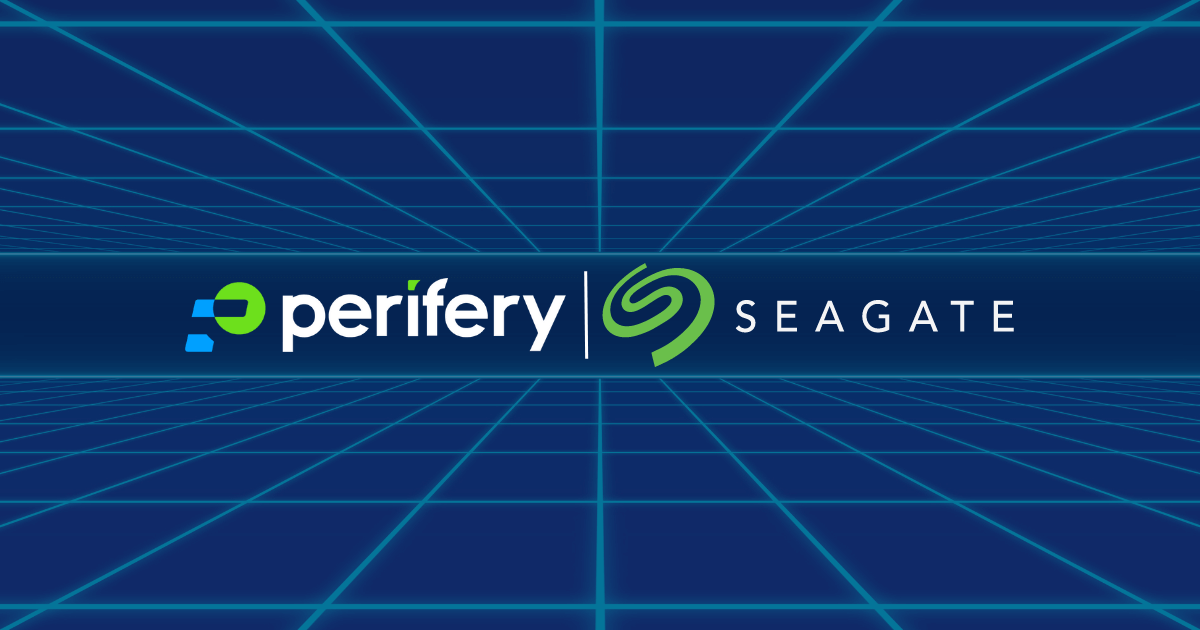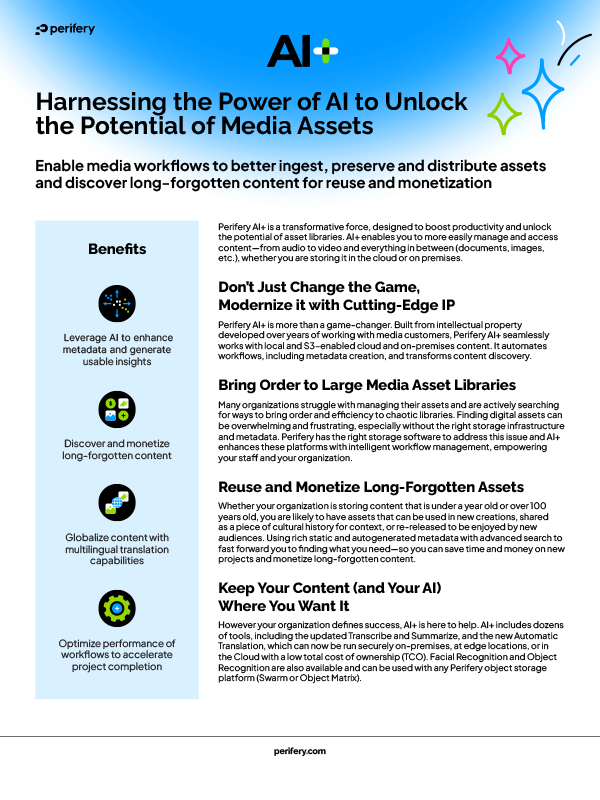
In our recent webinar, host Jonathan Morgan, Senior Vice President of Product and Technology at Perifery, was joined by Andy Palmer, Enterprise Data and Cloud Solutions Group – UK Channel Lead at Seagate, to delve into the intricacies of modern data storage solutions.
Jonathan kicked off the webinar with introductions, giving a nostalgic nod to Andy's extensive industry experience, as well as highlighting his own knowledge within the realm of data and storage. The conversation then moved on to discuss the collaboration between Seagate and Perifery.
Commenting on the importance of strategic partnerships, Andy said, “It’s really important to us [Seagate] to work with partners like Perifery to make sure that our product works seamlessly and safely with your product, and that the user experience is the best that it possibly can be.” He emphasized the synergy between the Seagate hardware and Perifery software, highlighting how the combination addresses customer pain points.
The tenants of modern archiving
The discussion moved to the history of archiving, highlighting the emotional and cultural significance of preserving data. Jonathan described data as "the modern cultural assets of a nation," before pointing out the effects that poor archiving practices have had on our world. He said, “We’ve lost media, we’ve lost events, we’ve lost what’s happening around us. And we’re the poorer for that.”
Andy reflected on previous challenges faced by broadcasters, such as overwriting tapes to save costs and space, leading to the irreversible loss of valuable footage. Discussing the growth of media assets, Andy noted how this had led to better organization and structuring of assets, a process which also introduced the concept of metadata. He concurred that modern archiving could be traced back 40-45 years as the industry became more computerized.
Jonathan shared a story from a visit to the British Film Institute, which highlighted the importance of digitalization and indexing of assets. With 38 acres worth of tape storage, Jonathan recounted how the sheer scale of the physical archive presented significant challenges in terms of accessibility, preservation, and monetization.
The emergence of object storage
Jonathan went on to discuss the concept of object storage, highlighting its emergence as an alternative to traditional tape and file systems for long-term data archiving. He outlined how object storage technology removes a lot of the manual intervention associated with legacy storage and provides scalability and security for future-proof asset storage. He also emphasized the simplicity of object storage, “The most amazing thing about object storage is, number one, it’s so easy to manage. It is easier, I would argue, than any file system out there.”
Jonathan also commented on how very few people asked for object storage specifically, to which Andy injected, “[People] just want to have to use it and use it efficiently, and it’s our job as the vendors to advise them and provide them a solution.” The pair discussed how users have specific needs: scalability, accessibility, security, and longevity. While they don’t necessarily care about what is under the hood, they ultimately want a solution that will help them achieve their workflow goals.
The integration of AI
Jonathan asked Andy to share his thoughts on the integration of artificial intelligence (AI) with object storage. Andy said, ”AI enhances object storage because it automates the metadata extraction, content tagging, intelligent search and so on.” Jonathan elaborated on how AI can optimize data management by running algorithms that extract metadata directly within the storage cluster, enhancing searchability and security.
Noting how AI technology works seamlessly with S3 APIs, Jonathan pointed out how all AI analysis and information lives with the original video, allowing assets to remain searchable, resilient, and safeguarded. Andy added, “I agree, and AI, as well, bolsters security because it can identify threats much faster. It can bolster predictive maintenance because it can see and prevent downtime, saving billions potentially in lost productivity.”
Jonathan illustrated practical applications of AI-enhanced object storage provided by Perifery, “We run some of the AI in the cluster so we're able to run algorithms and extract metadata from the video, to make it searchable from within the cluster for additional optimization. We can run AI at the edge, on-prem, in the cloud.”
Andy then highlighted Seagate's CORVAULT, emphasizing its role in high-capacity, self-healing storage solutions. The duo agreed that these capabilities are invaluable in the media and entertainment industry, where efficient data retrieval is crucial.
Preparing for future advancements
As the webinar drew to a close, Andy and Jonathan discussed how media companies can prepare for advancements in the industry with AI and object storage. Jonathan stressed the importance of preserving assets and metadata to leverage future technological developments and maximize the value of organizational data.
The collaboration between Seagate and Perifery is evidently paving the way for a more efficient, secure, and intelligent approach to media management. To learn more, explore the solution brief.
